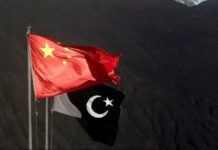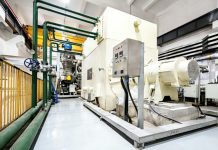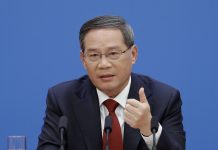DM Monitoring
BERLIN: With a number of power and transport projects built in recent years, the China-proposed Belt and Road Initiative (BRI) is playing a positive role in Europe, providing clean power and high-quality infrastructure to local people.
Being benefit-sharing, environmental-friendly and high-quality, the BRI projects are bringing tangible benefits to European countries and their people.
Constructed by China National Machinery Import and Export Corporation (CMC), the Kaposvar 100MW Photovoltaic Power Plant is Hungary’s largest solar power station with a total investment of around 100 million euros (about 121 million U.S. dollars).
The CMC invested equity capital, while Bank of China provided financing for the project. The project funds are raised from the market, while Hungary had no loan or electricity purchase fulfillment guarantee, Meng Fanye, director of the CMC Hungarian project, told media.
The CMC’s investment will be amortized with electricity sales in the future, Meng said, adding the station will contribute a total of 2 million euros (about 2.12 million dollars) in taxes to local and state governments.
The 180-km-long highway linking the port of Bar on Montenegro’s Adriatic coast to the landlocked neighbor Serbia is another example. The project carried out by a Chinese company only has a 2-percent interest rate, a 20-year repayment schedule, and a six-year grace period, extremely favorable by international standards.
Rejecting a so-called “debt bondage” myth, Montenegrin Prime Minister Dusko Markovic said in June 2019 that his country did not provide land as collateral for loans, adding the Export-Import Bank of China offered the best terms in the international financial market at that moment.
“Absolutely nothing of what is speculated is true … there is no ‘debt bondage’,” said Markovic, stressing that the investor is Montenegro, not China or any other country. Since the very beginning of the BRI about seven years ago, environment, ecosystem and climate protection have become top priorities. In April 2019, China said that the BRI must be green and sustainable, and would deliver high-quality growth for all.
The BRI projects in Europe are using cutting-edge technologies and fully comply with European Union (EU) standards. Stanari, a small town in northern Bosnia and Herzegovina (BiH), is famous for the Stanari Thermal Power Plant (Stanari TPP), the first China-built coal-fired power plant in Europe, which went into operation in 2016. Stanari is rich in lignite, a low-quality type of coal emitting many pollutants if burned in a conventional way. In 2016, China’s Dongfang Electric Corporation (DEC) introduced an energy-saving and emission-reducing technology to the plant. Now the production here is efficient, said Aleksandar Milic, technical director of the plant, adding that in controlling emissions of sulfur dioxide, nitrogen oxide and dust, the operation meets or even exceeds EU standards.
In Croatia, the Peljesac Bridge project showed that a major infrastructure can make little impact on the local ecosystem with the highest environmental standards.





